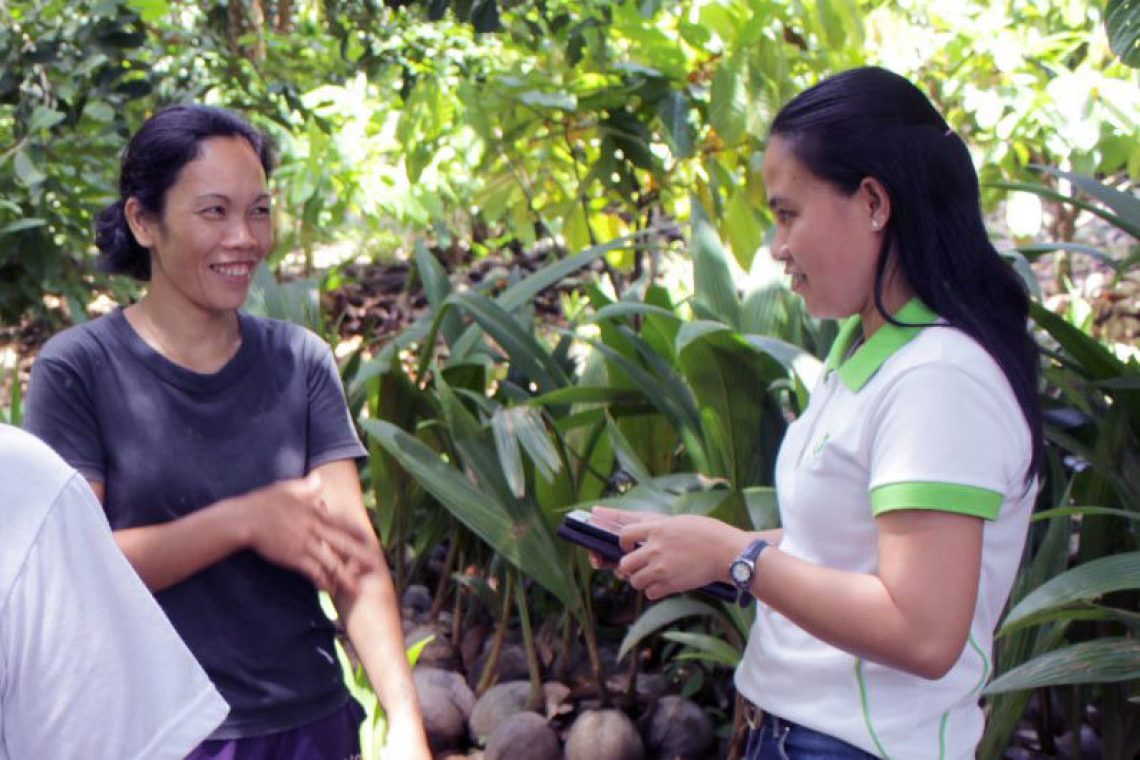Make your 2X MATCHED gift today!
This week only: Every $1 will be matched with $2 to enable women worldwide.
This week only: Every $1 will be matched with $2 to enable women worldwide.
Posted on 04/17/2018

We’ve just scratched the surface. The spread of mobile technology combined with remote-sensing data, distributed computing, and unprecedented cloud-based data storage capabilities creates new opportunities to bring precision agriculture to poor smallholder farmers and to integrate them into the broader food and financial systems.
Some 500 million farmers cultivating small plots of land are responsible for feeding at least two billion people. Yet, they have been operating largely outside of formal markets. They eat what they grow and sell any small surplus to local markets. The inability to participate in the formal market system reinforces poverty so deeply entrenched that 70 percent of the world’s extreme poor and half of all food-insecure people are farmers.
Digital technology, big data, and data-derived insights are beginning to help change this unacceptable status quo. To dig into the possibilities, the Grameen Foundation conducted a landscape assessment on the use of big data to support smallholder farmers, beginning with the construction and use of farmer profiles. The assessment and a webinar on April 9 were developed with the support of USAID’s Digital Development for Feed the Future (D2FTF) and FHI 360.
Farmer profiles may not sound sexy, but they provide the raw data that fuel billions of dollars of investments into agricultural development on an annual basis. With 102 participants from across the agricultural development sector signed in to the webinar, Grameen Foundation Research Director Bobbi Gray reported on who collects this data, how they do so, how it is shared and managed, and how it is analyzed and used to support smallholders with products and services. The webinar also outlined key considerations for assessing existing efforts or investing in new efforts to develop and leverage farmer profiles.
A farmer profile can be simple or complex, and typically gathers a suite of information that can include: farmer and household demographics, education, farm practices, financial assets and services used, farm environmental conditions, size of the farm, land ownership, crops grown, income and income sources, the gender dimensions of all of the above, and more.
From this data, government agencies, companies, nonprofits and others can ascertain the most useful services and information needed to support a farmer’s productivity, access to appropriate financial services, and integration into formal agricultural markets.
Much of our work at Grameen Foundation draws on data-derived insights to support smallholder farmers. For example, our FarmerLink program in the Philippines has combined data on agricultural practices collected directly from farmers, with weather data and plant science.
At one point in the program, analysis of weather data identified areas at risk of coconut pest infestation because the prevailing temperature and relative humidity over a 45-day period were conducive to the reproduction of the insect pest. Based on the farm data collected, we knew that 60 percent of farmers did not normally practice pest surveillance. Therefore, FarmerLink used its SMS app to notify 2,873 at-risk farmers and remind them of how to identify the insect pests; the preventative actions they could take, including the elimination of the insects by pruning and proper disposal of the infected parts. The farmers were also advised to photograph the insect pests and to relay these images to the government’s coconut agency so that it could monitor and contain any insect outbreaks.
The effective use of digital tools, data, and robust partnerships helped avoid a major pest outbreak. Among the partners were the Philippine Coconut Authority and coconut exporter Franklin Baker. Both deployed networks of field agents to collect farm data and train farmers in Good Agricultural Practices, all using the FarmerLink app. Meanwhile, another partner, People’s Bank of Caraga, a microfinance-oriented bank, was able to utilize data collected on farmer households to identify those farmers that could most benefit from loans to diversify crop production.
During the webinar, Gray shared other examples of the use of data and farmer profiles as well. Aclimate Colombia, for example, combined the use of 25 years of rice harvest data with plant science data and weather data to predict that a major dry period would disrupt the upcoming growing season. Based on this insight, the project advised farmers to delay their planting. A study found that those farmers who acted on the advice averted US$3.6 million of potential economic losses. Aclimate Colombia was based on a partnership between the International Center for Tropical Agriculture (CIAT), the Colombian Ministry of Agriculture and Rural Development (MARD), the National Institute of Hydrology, Meteorology and Environmental Studies (IDEAM), and Fedearroz, the association of rice growers.
Yet another creative use of data highlighted was Mahindi Master, a game-used by Kenyan farmers. It combines crop modeling, rainfall data, and soil information into a simulation application that “enables farmers to experiment and learn as they would on their own farm, without risking real investments in purchased inputs.”
These examples provide just an inkling of what is possible. We are on the threshold of a new era in the application of digital technology and data in supporting an agricultural revolution that can help transform the productivity and sustainability of small-scale farming in the world’s poorest countries. This begins with farmer profiles. How they are compiled, stored, analyzed and utilized using advanced digital technologies can drive whether, and how quickly, agricultural development is able to end poverty and hunger among rural populations.
For a high-level summary of the findings, see infographic produced by Feed the Future.
Steve Hollingworth is President and CEO of the Grameen Foundation.